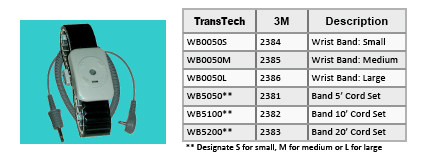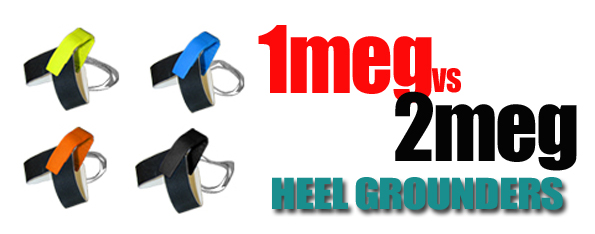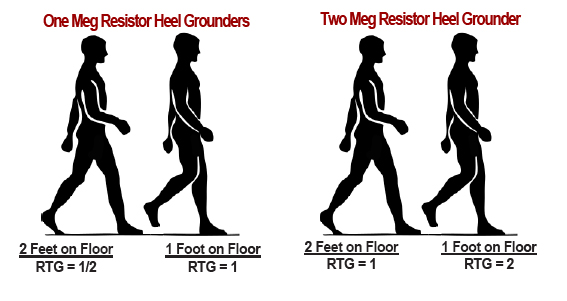Constant Monitors are excellent tools for static control and should be considered for any grounded workstation. ESD Constant monitors reduce production costs by eliminating the time spent on testing wrist straps before each shift. Further savings may be realized by reduced ESD damage from malfunctioning wrist straps. But a quick web search results in a dizzying amount of options. The following article outlines the important considerations when choosing an ESD Constant Monitor.  For more information, please read “Survey of Constant (Continuous) Monitors for Wrist Straps” in the ANSI/ESD S20.20.
Type of Constant Monitors:
There are several types of constant monitors available. Understanding the different technologies used for constant monitoring will make your decision easier. For the purpose of this article, we will be reviewing the two most common types: Impedance and Resistance Monitors.
Impedance (or single wire) constant monitors
Impedance monitors use a very low AC voltage to detect a person though a single wrist strap. When a person is attached and the wrist strap is functioning, the monitor is in an unalarmed state. The impedance monitor uses the phase difference between current and voltage to detect changes in impedance of the cord, band and person. A detection circuit is used to reduce false alarms and eliminate adjustments. These types of monitors list anywhere from $30-$100 and any standard wristband and coil cord can be used. The CM400 series from Transforming Technologies are single wire impedance monitors.
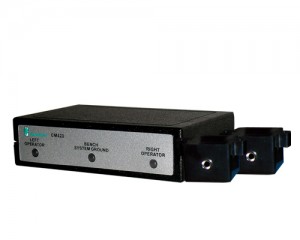
Single Wire Constant Monitor CM420
Resistance (or Dual Wire) constant monitors
This type of monitor is used with a two wire (dual conductor) wrist strap. When a person is wearing a wrist strap, the monitor observes the resistance of the ground loop, consisting of a wire, a person, a wrist-band, and a second wire. If any part of the loop should open (become disconnected or have out of limit resistance), the circuit will go into the alarm state. An important feature of the dual wire wrist strap is that even if one conductor is severed, the operator has reliable path-to-ground with other wire. These types of monitors range from $80-$200 and must use dual wire wrist straps. The CM2800 series from Transforming Technologies area full line a Resistance Monitors and can be used with most commercially available dual wire wrist straps.
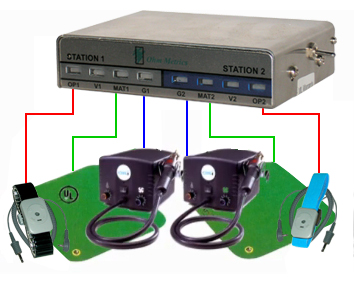
CM2800 Constant Monitor
Monitoring Features:
Constant monitors can be very simple, or can be loaded with bells and whistles depending on the application. The following are some common features:
Work surface Monitoring: An option available with some constant monitors is the ability to monitor work surface ground connections.
Tool Monitoring: Constant monitors may also monitor grounded equipment in a manner similar to work surfaces.
Data logging: Some monitoring systems have data recording capabilities.
Adjustable Alarms: Some monitors allow users to set the alarm parameters in order to satisfy higher ESD standards.
Alarm Accessories: Display modules, external relays and sirens are available for specific applications.
Conclusion:
Constant monitors are reliable, money saving devices used ensure elements of a workstation are grounded. Single wire monitors, such as the CM400 series from Transforming Technologies use single wire wrist straps and impedance technology to ensure grounding. The CM400 is the most cost effective and monitors one wrist strap. The CM410 monitors one wrist strap and the work surface. The CM420 is the fully loaded model that monitors two wrist straps and the work surface. The CM2800 dual wire constant monitor from Transforming Technologies is the top of the line and monitors two wrist straps, two work surfaces, two grounded tools and has user programmable alarm parameters. The entry level CM2815 monitor uses the same great design of CM2800 and monitors two wrist straps, and two work surfaces. Use the following graph to help choose your constant monitor:

Constant Monitor Selection Guide from Transforming Technologies





